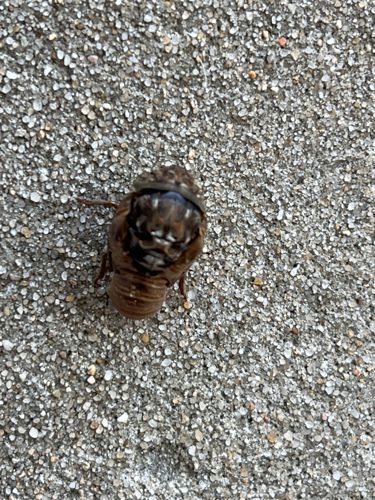Cicada nymph (exuvia)
Scientific Name: Various genera within Cicadidae (e.g., Magicicada for periodical cicadas, Neocicada, Tibicen for annual cicadas)
Order & Family: Order: Hemiptera, Family: Cicadidae
Size: The exuviae (shed skins) typically range from 2.5 to 5 cm (1 to 2 inches) in length, depending on the species. Adult cicadas are similar in size.

Natural Habitat
Nymphs live underground, typically in forested or suburban areas with mature trees, where they can feed on tree roots. After emerging, the exuviae can be found on tree trunks, branches, fences, walls, or other vertical surfaces near the emergence site.
Diet & Feeding
Nymphs feed on xylem sap from the roots of trees and woody plants. Adult cicadas can feed on xylem sap from twigs and branches, but their primary purpose is reproduction, and they do not feed extensively.
Behavior Patterns
Cicada nymphs spend most of their lives underground, often for several years (e.g., 2-5 years for annual cicadas, 13 or 17 years for periodical cicadas), feeding on xylem sap from tree roots. When ready to molt into adults, they dig tunnels to the surface, typically at dusk or night, and crawl onto a vertical surface (like a tree trunk, fence, or in this case, textured concrete) to undergo their final molt. The discarded exoskeleton, known as an exuvia, is what is seen in the image. Adult cicadas are known for their loud buzzing songs, produced by males to attract mates.
Risks & Benefits
Risks: Cicadas are harmless to humans; they do not bite or sting. Large emergences of periodical cicadas can cause some damage to young trees due to egg-laying on small branches, but this is usually minor and established trees are rarely seriously harmed. Benefits: Cicadas serve as an important food source for many animals, including birds, reptiles, and mammals. Their underground tunneling helps aerate the soil, and when they die, their bodies contribute nutrients back to the ecosystem.
Identified on: 8/9/2025